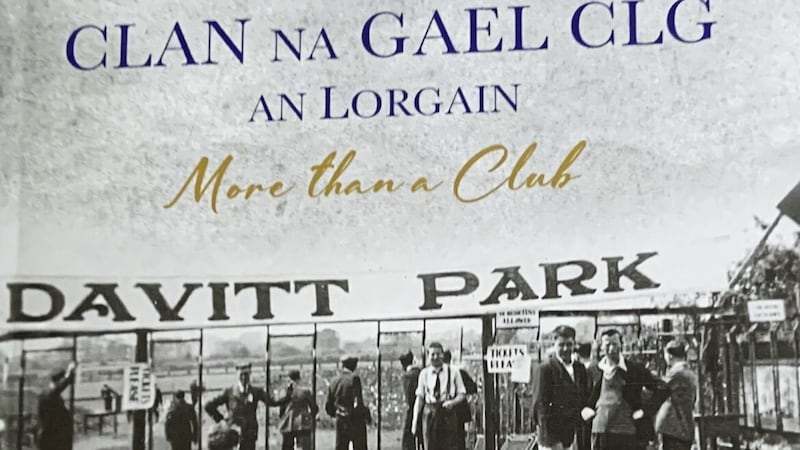THE Clan na Gael committee chose historian Dr Gerard MacAtasney to write the history of Lurgan club and it has proved to be an excellent one.
Better known as an authority on the Great Famine and the 1916 Rising, this is his first sojourn into the realms of the GAA. An avid follower of Armagh, he has brought his forensic research skills with him in the publication of Clan Na Gael CLG An Lorgain with the codicil ‘More than a club’.
By delving through minutes of Ulster Council, Armagh County Board and club meetings and countless newspaper reports, Dr MacAtasney has produced a book of 533 pages, embellished with rare photographs which will prove to be a collector’s item in the years ahead, not only for those from the Lurgan area but throughout Armagh and beyond.
The club was founded in 1922 and its story begins with an intriguing opening chapter ‘The Priest, the Protestant and the Patriot’ as the author places the club in the social history of the day and weaves his way through the following decades.
His research has unearthed some fascinating personal stories as well as the accomplishments of the teams over the years.
One of the players on the first Clan na Gael team in 1922, Samuel Patterson, had fought in two of the great battles in history, namely Gallipoli and the Battle of the Somme. After his playing career ended, Samuel became the club groundsman!
As well as a photograph of Patterson at Gallipoli, other photos are seen for the first time as negatives found recently turned out to be of the opening of Davitt Park (the cover of the book) in 1947 and these along with archive material showcase the efforts of the committee, headed by club member Alf Murray.
Familiar names from the club who made their mark at senior level in Armagh GAA are given their place: Brian Seeley, Harry Hoy, Colm McKinstry, Jimmy Smyth, Jim McKerr, Diarmaid Marsden and Barry O’Hagan, but the author is at pains to show that the success of the club over the years was founded on the so-called ‘club players’ who did so much to bring success to the club over the years.
Clans were the first team to win the Ulster Club Championship three years in-a-row in a golden period in the 1970s when they contested the All-Ireland final against UCD; losing after a replay.
Much is made of the win in 1950 of the first unofficial Ulster Club Championship when the Clans defeated St John’s in Corrigan Park in front of a crowd of 8,000, despite the fact that St John’s had flown four players home from Glasgow for the game!
Off the field, the efforts to promote Irish language, dancing and Scor are celebrated. Indeed, in the inaugural year of Scor in 1970, the first winner of the ballad singing was Clan’s Patricia Cafolla (nee McLaughlin). During the Covid epidemic, members helped countless members of the public all over Lurgan, proving that it is ‘More than a Club’.
The History of Clan na Gael CLG An Lorgain will be launched in the Club on Wednesday, March 29 by Uachtarain Tofa, Jarlath Burns.
Enquries to: secretary.clannagaellurgan.armagh@gaa.ie






